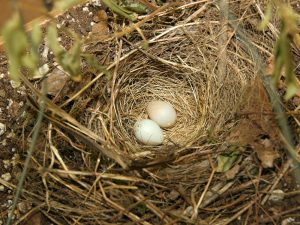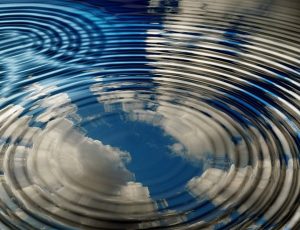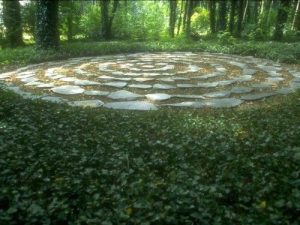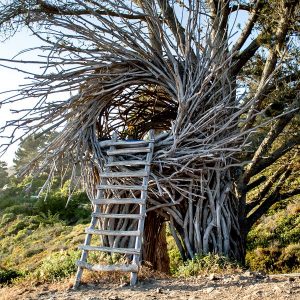 The Yogabliss on-line Moving into Meditation class met this morning. Looking into digital faces feels so strangely intimate. Thank you all for giving me your face. This vulnerability we share conveys an open heartedness that relates to our exploration of communication. Perhaps we are all making these explorations as we live through a time that is calling for our action. One of our most powerful human resources is our voice. We learned some fundamental communication principles from meditation teacher and Nonviolent Communication trainer, Oren Jay Sofer. Oren is author of Say What You Mean. He offers on-line classes, retreats and workshops on Mindful Communication.
The Yogabliss on-line Moving into Meditation class met this morning. Looking into digital faces feels so strangely intimate. Thank you all for giving me your face. This vulnerability we share conveys an open heartedness that relates to our exploration of communication. Perhaps we are all making these explorations as we live through a time that is calling for our action. One of our most powerful human resources is our voice. We learned some fundamental communication principles from meditation teacher and Nonviolent Communication trainer, Oren Jay Sofer. Oren is author of Say What You Mean. He offers on-line classes, retreats and workshops on Mindful Communication.
We drew inspiration from In poet and writer, Ursula Le Guin. Her book of essays, The Wave in the Mind, extolls the magic and power of words. In her essay, Listening is Telling, writer and social commentator Maria Popova writes about the courage it takes to step into the speaking and listening dance of vulnerability. Finally we heard writer Neil Gaiman’s poetic tribute to “marine biologist and poet laureate of science” Rachel Carson, After Silence.
We practiced a present body centering practice “coming home to our bodies.” We then spent some time in relaxed reflection.
Relaxed Reflection
Bring your awareness home to your body . . . you can fill the whole field of your body with awareness . . . noticing where your awareness lands . . . pausing to feel and to listen . . . Can you tune in to your motivation for being here? Can you let it be without judgment and just listen to the very basic human need that may have brought you here today? Can you let that need belong? You might take a deeper breath or two around it and let that part of yourself know it’s o.k. . . .
 Being here, right now, we are willing to be present for what is true? In present body awareness we can connect with those parts of our being that often go unheard, unseen or even buried beneath all the life filling our days. We can feel those unheard, unseen parts of ourselves as energetic signature in our bodies. We can be curious about how they motivate us to act in the world. Now, more than ever, we need communication and connection.
Being here, right now, we are willing to be present for what is true? In present body awareness we can connect with those parts of our being that often go unheard, unseen or even buried beneath all the life filling our days. We can feel those unheard, unseen parts of ourselves as energetic signature in our bodies. We can be curious about how they motivate us to act in the world. Now, more than ever, we need communication and connection.
We have an inner dialog that simmers beneath the surface of our skin . . . At the deepest levels it is so fast, reflexive like the silver of a fish darting . . . catching the light of awareness . . . just barely . . . a quick grip of muscle or flush of sweat . . . something making itself known. And just as quickly we react . . . an automatic response to flee, to freeze, to defend or guard . . . Perhaps in response to something we can’t bear to accept or feel within ourselves or its mirror image – something we find intolerable about another . . . We say or do something with unintended consequences that cause pain . . . that cause the suffering of not understanding or not being understood.
In the Tricycle interview, The Field Guide to Right Speech, Oren Jay Sofer, says:
 A lot of the times, it’s not so much that we don’t say what we mean but that we don’t know what we mean. Often we’re not fully aware of what we want to communicate or why. In order to know what we mean, we have to slow down, listen, and look.
A lot of the times, it’s not so much that we don’t say what we mean but that we don’t know what we mean. Often we’re not fully aware of what we want to communicate or why. In order to know what we mean, we have to slow down, listen, and look.
Meaningful conversation depends on our ability to be present . . .We tend to think of communication as an external skill, but it depends on the level of clarity we have about our own experience and our ability to bring positive qualities like kindness, patience, courage, and balance to what’s happening inside. So if we want to have better relationships with other people, we need to have a relationship with ourselves.
Right now we can reflect on how we relate to ourselves. Are we in touch with how we really feel? What are our feelings trying to tell us? What we say in our inner and outer dialogs shapes the world around us. Right now we can reflect on what we are telling ourselves. . . . What are we telling the world? What is the world telling us now? Take a moment . . . let your awareness land on one of the questions that is most salient for you . . . no need to become overwhelmed. So much is happening in our lives right now . . . .
Ursula Le Guin writes:
Listening is not a reaction, it is a connection. Listening to a conversation or a story, we don’t so much respond as join in — become part of the action. . . .
. . . When you can and do entrain, you are synchronising with the people you’re talking with, physically getting in time and tune with them. No wonder speech is so strong a bond, so powerful in forming community. . . .
 . . . When you speak a word to a listener, the speaking is an act. And it is a mutual act: the listener’s listening enables the speaker’s speaking. It is a shared event, intersubjective: the listener and speaker entrain with each other. Both . . . are equally responsible, equally physically, immediately involved in sharing bits of themselves. . . .
. . . When you speak a word to a listener, the speaking is an act. And it is a mutual act: the listener’s listening enables the speaker’s speaking. It is a shared event, intersubjective: the listener and speaker entrain with each other. Both . . . are equally responsible, equally physically, immediately involved in sharing bits of themselves. . . .
. . . Speech is dynamic — it is action. To act is to take power, to have power, to be powerful. Mutual communication between speakers and listeners is a powerful act. The power of each speaker is amplified, augmented, by the entrainment of the listeners. The strength of a community is amplified, augmented by its mutual entrainment in speech. . . .
This is why utterance is magic. Words do have power. Names have power. Words are events, they do things, change things. They transform both speaker and hearer; they feed energy back and forth and amplify it. They feed understanding or emotion back and forth and amplify it.
Right here, right now we are experiencing the magic and power of words . . . . How humbling it is to realize their potential – the magic and power we have and the magic and power we are subject to.
Maria Popova writes:
 Every act of communication is an act of tremendous courage in which we give ourselves over to two parallel possibilities: the possibility of planting into another mind a seed sprouted in ours and watching it blossom into a breathtaking flower of mutual understanding; and the possibility of being wholly misunderstood, reduced to a withering weed. . . . Yet something impels us to hold these possibilities in both hands and go on surrendering to the beauty and terror of conversation, that ancient and abiding human gift. And the most magical thing, the most sacred thing, is that whichever the outcome, we end up having transformed one another in this vulnerable-making process of speaking and listening.
Every act of communication is an act of tremendous courage in which we give ourselves over to two parallel possibilities: the possibility of planting into another mind a seed sprouted in ours and watching it blossom into a breathtaking flower of mutual understanding; and the possibility of being wholly misunderstood, reduced to a withering weed. . . . Yet something impels us to hold these possibilities in both hands and go on surrendering to the beauty and terror of conversation, that ancient and abiding human gift. And the most magical thing, the most sacred thing, is that whichever the outcome, we end up having transformed one another in this vulnerable-making process of speaking and listening.
Neil Gaiman’s poem in honor of Rachel Carson, After Silence:
All the gods on the hilltops
and all the gods on the waves
the gods that became seals
the voices on the winds
the quiet places, where if we are silent
we can listen, we can learn.
Who speaks? And why?
Someone could ask the questions, too.
 Like who?
Like who?
Who knew? What’s true?
And how? Or who?
How could it work?
What happens then?
Are consequences consequent?
The answers come from the world itself
The songs are silent,
and the spring is long in coming.
There’s a voice that rumbles beneath us
and after the end the voice still reaches us
Like a bird that cries in hunger
or a song that pleads for a different future.
Because all of us dream of a different future.
And somebody needs to listen.
To pause. To hold.
To inhale, and find the moment
before the exhale, when everything is in balance
and nothing moves. In balance: here’s life, here’s death,
and this is eternity holding its breath.
After the world has ended
After the silent spring
Into the waiting silence
another song begins.
Nothing is ever over
life breathes life in its turn
Sometimes the people listen
Sometimes the people learn
Who speaks? And why?
